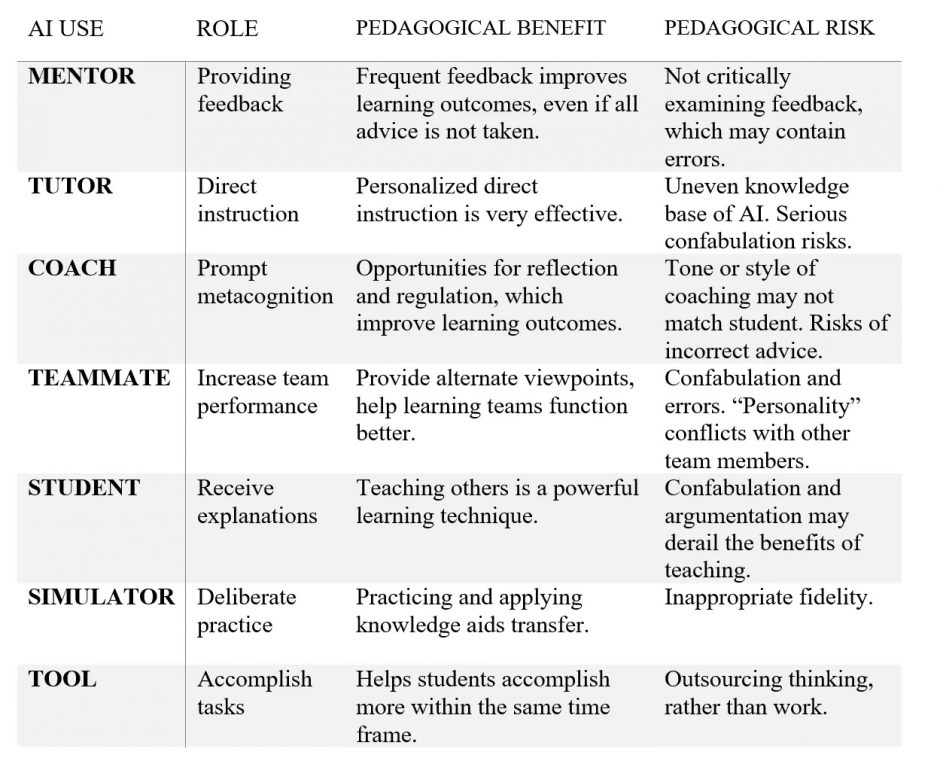In education, the integration of GenAI offers a multitude of applications within your courses. Presented is a detailed table categorizing various use cases, outlining the specific roles they play, their pedagogical benefits, and potential risks associated with their implementation.

A Complete Breakdown of each use case and the original image can be found here.
At UBC, a prevalent method of utilizing GenAI tools like ChatGPT involves professors projecting these AI-generated responses during class. This interactive approach includes an in-depth discussion of the AI’s output. Here, the emphasis is on expanding upon the AI’s typically broad, high-level responses. The students are then encouraged to delve deeper, providing a more nuanced and comprehensive analysis of the subject at hand. This method serves a dual purpose. Firstly, it functions as an engaging learning activity, fostering critical thinking and deeper understanding among students. Secondly, it acts as a practical lesson on the responsible use of AI technologies. It highlights that while AI can be a valuable tool, its output should be critically evaluated and not relied upon as an all-encompassing solution. This approach educates students on the importance of discernment and the need for human oversight when integrating AI into various fields of study.